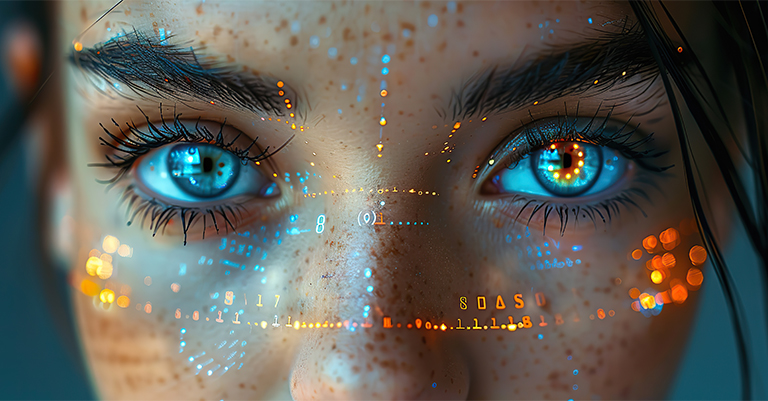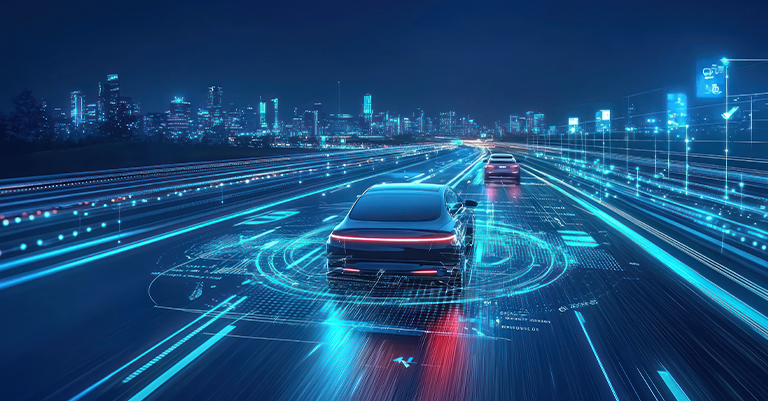How AI Image Recognition is Changing Everyday Life
Artificial Intelligence (AI) is changing how we live, work, and interact with technology. One of its most exciting areas is image recognition. AI image recognition helps computers understand and identify objects, people, and scenes in pictures. This technology is becoming more common in our everyday lives, from smartphones to home security systems. In this blog, we’ll explore how AI image recognition works, where we use it, and what the future holds.
What is AI Image Recognition?

AI image recognition is when computers learn to understand pictures. It helps machines see and identify objects, people, and places in images or videos. This technology mimics the human eye but can analyze images faster. AI image recognition uses special computer programs called neural networks. These programs learn from thousands of labeled images, getting better over time.
How Does AI Image Recognition Work?
AI image recognition involves a series of steps that help computers understand what they see in pictures. Each step is important for turning a raw image into useful information. From capturing the image to identifying and classifying objects, the process is similar to how humans recognize things around them. Let’s break down each stage to see how AI makes sense of visual data and becomes smarter with every image it processes.
Image Capture: A Camera Takes a Picture or Video
Image capture is the first step in AI image recognition. It involves using a camera or sensor to take a picture or record a video. This could be a photo taken by a smartphone, a security camera recording, or even images captured by satellites in space. The image or video serves as the raw data for the AI to analyze. The quality of this captured image greatly affects how well the AI can identify and understand the objects within it. A clear, high-resolution image allows the AI to extract more detailed information for analysis.
Processing: The AI Adjusts the Picture to Make It Easier to Analyze
Once the image is captured, the next step is processing. During this stage, the AI adjusts the image to make it easier to analyze. This might involve resizing the image, adjusting brightness or contrast, and filtering out unnecessary details. For example, if the AI is looking at a photo of a forest, it may focus on adjusting the image so that the trees’ edges stand out more clearly. These adjustments help the AI focus on the most important parts of the image, making it easier to recognize features in the next steps.
Feature Detection: The AI Finds Important Parts of the Picture, Like Shapes, Edges, or Colors
After processing the image, the AI starts detecting features within it. Feature detection involves finding specific patterns in the picture, such as shapes, edges, or colors. For example, if the AI is analyzing a photo of a car, it might identify the shape of the wheels or the edges of the windows. This step allows the AI to break down the image into simpler parts. Detecting these features helps the AI understand what might be in the picture, such as the difference between a round shape (a wheel) and a square shape (a window).
Object Recognition: The AI Identifies Objects, Such as a Dog, a Tree, or a Person
Object recognition is when the AI matches the detected features to specific objects. The AI uses what it has learned from thousands of images to identify items like animals, plants, buildings, or people. For instance, if it sees a picture with four legs, a tail, and fur, it might recognize it as a dog. This step is similar to how our brains work when we see things—we recognize familiar patterns and understand what they represent. With this capability, AI can perform tasks like facial recognition or identifying items in a shopping app.
Classification: It Then Sorts the Objects into Categories, Like Animals, Vehicles, or People
After recognizing objects in an image, the AI sorts them into categories. This step is called classification. For example, if the AI identifies a dog, a car, and a tree in a picture, it will place each in its respective category—animals, vehicles, and plants. Classification makes it easier for systems to organize information and make decisions. In a security camera, for example, the AI might classify movement as human or non-human, allowing it to send alerts only when it detects a person. This final step helps the AI system understand and respond to the visual data it has analyzed.
AI systems can process these steps in just a few seconds. This makes them useful in many situations, like real-time face recognition or object detection.
Everyday Applications of AI Image Recognition

AI image recognition isn’t just for scientists. We use it in everyday technology without even noticing. Here are some common examples:
Smartphones: Smarter Photos and Security
Smartphones use AI image recognition for many features:
Face Unlock: Unlocking Phones with Just a Look
Face unlock is a popular feature on many modern smartphones. It uses AI image recognition to identify your face and verify your identity. When you look at your phone, the camera scans your facial features and compares them to the data stored from when you set up face unlock. If the features match, the phone unlocks, allowing you access. This makes using your phone faster and more secure. Unlike passwords or fingerprints, face unlock lets you open your phone hands-free, which is especially helpful when your hands are full.
Better Photos: AI Enhances Your Pictures
AI plays a big role in making smartphone cameras smarter and more user-friendly. It can automatically adjust settings like brightness, contrast, and focus to ensure each shot looks its best. For example, if you’re taking a photo in low light, the AI might brighten the scene so your picture comes out clearer. It can even recognize different types of scenes, such as portraits, landscapes, or food, and adjust the settings for each. This makes it easy for anyone to take professional-looking photos, even without understanding complex camera settings.
Fun Filters: Adding Creative Effects with AI
Many social media apps, like Instagram and Snapchat, use AI for fun filters that follow your face. These filters can add funny effects, such as bunny ears, sunglasses, or even turn you into a cartoon character. The AI recognizes where your eyes, nose, and mouth are, making the filters move with your expressions. This technology allows users to create entertaining content and share it with friends. It’s a great example of how AI image recognition can make digital experiences more playful and engaging.
Healthcare: Helping Doctors See More Clearly
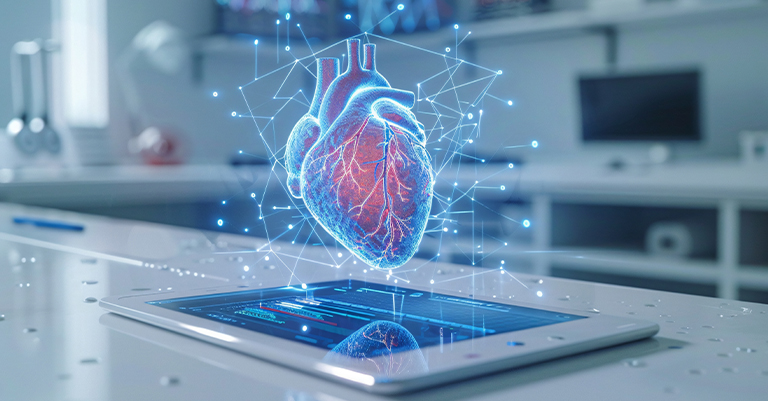
AI image recognition is changing healthcare, too:
Reading X-rays: Helping Doctors Find Problems Faster
AI is becoming a valuable tool in reading medical scans like X-rays, MRIs, and CT scans. It can quickly analyze these images to detect issues such as broken bones, tumors, or other abnormalities. For example, if a patient has a fracture, the AI can highlight the exact area of concern, helping doctors make faster and more accurate diagnoses. This technology supports doctors by reducing their workload and ensuring no small details are missed. It also allows patients to receive quicker results, which can be critical in urgent situations.
Online Doctor Visits: AI Assisting During Virtual Check-Ups
AI is also useful during online doctor visits, especially as telemedicine becomes more common. During video calls, AI can analyze a patient’s appearance to help doctors spot skin conditions, rashes, or infections. It can guide doctors by highlighting areas of concern, making the virtual consultation more effective. This helps patients receive faster advice and care, even when they cannot visit a clinic in person. AI makes it easier for doctors to provide accurate assessments and follow-up, improving the overall quality of remote healthcare.
Shopping: Finding What You Want Faster
Image recognition makes shopping easier:
Visual Search: Finding Products with Just a Photo
Visual search allows shoppers to find products using pictures instead of text. Many websites and shopping apps let you upload a photo of an item you like, such as a dress or a pair of shoes. The AI then analyzes the image and searches for similar products in its database. This makes shopping much easier, especially when you don’t know the name or brand of the item you want. Visual search helps customers discover new styles and options with just a simple snapshot.
Inventory Management: Keeping Store Shelves Stocked
AI helps stores keep track of their products through inventory management systems. Cameras equipped with AI scan shelves and monitor stock levels in real-time. The AI can identify which items are running low and notify staff when it’s time to restock. This ensures that popular products are always available for customers and reduces the chances of items being out of stock. It also helps store managers keep better records of their inventory, saving time and improving efficiency in the store.
Virtual Try-Ons: See How Products Look on You
Virtual try-ons use AI to show how items like sunglasses, makeup, or clothes will look on you without needing to physically try them on. You can use your phone or computer camera to see how different products fit your face or body. The AI analyzes your features and accurately places the item in the right spot, making the experience feel real. This feature is especially popular in fashion and beauty apps, helping customers make better purchase decisions and try out new looks before buying.
Smart Homes: Safer and Smarter Living
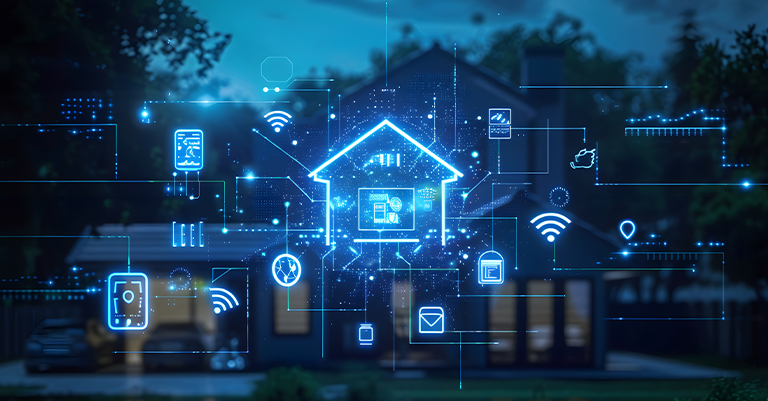
AI helps make our homes more secure and efficient:
Home Security Cameras: Smarter Alerts for a Safer Home
Home security cameras with AI can recognize and differentiate between people, pets, and cars. This feature helps the cameras send more accurate alerts and reduces the number of false alarms. For example, if your dog walks through the yard, the AI knows it’s just your pet and won’t alert you. But if it detects a stranger, it sends a notification right away. This makes home security systems more reliable, allowing homeowners to focus only on real security concerns and feel safer in their homes.
Voice Assistants with Vision: Helping You Around the House
Some voice assistants, like the Amazon Echo Show, come equipped with cameras and use AI for added features. These devices can recognize items in your home, making them more useful in everyday tasks. For example, you can ask it to scan a barcode to add an item to your shopping list or show you who’s at the door during a video call. This combination of voice and vision makes interacting with your smart home more intuitive and convenient. It’s like having an extra set of eyes to help you with daily chores.
Cars: Making Driving Safer
AI image recognition helps cars become smarter and safer:
Self-Driving Cars: AI That Sees the Road
Self-driving cars rely on AI to understand and navigate the road. Using cameras and sensors, these cars can “see” their surroundings, recognizing traffic signs, pedestrians, and other vehicles. The AI processes this information in real-time, helping the car make decisions like when to stop, turn, or change lanes. This technology aims to make driving safer by reducing human errors. With AI guiding them, self-driving cars can adjust quickly to changes on the road, improving safety and convenience for passengers.
Driver Alerts: Keeping Drivers Safe and Focused
AI is also helping to keep human drivers safe with driver alert systems. These systems use cameras to monitor the driver’s face and behavior, checking for signs of tiredness or distraction. If the AI detects that the driver is getting drowsy or looking away from the road too often, it sends an alert to help the driver stay focused. These warnings can prevent accidents by reminding drivers to take breaks or pay attention. It’s like having a co-pilot that watches out for your safety while you drive.
The Future of AI Image Recognition

AI image recognition is improving fast, and the future looks bright. Here are some exciting possibilities:
Real-Time Recognition: Faster AI for Instant Responses
Real-time recognition is a big focus for the future of AI image recognition. Traditionally, analyzing images required powerful computers with lots of processing power.
But now, AI is becoming faster and more efficient. Soon, devices like smartphones, smart cameras, and even small sensors will be able to analyze images instantly, without needing a connection to a big server or cloud.
This means that self-driving cars can make split-second decisions on the road, improving safety. Similarly, smartphones can offer real-time augmented reality experiences, like instantly placing virtual objects into the environment through the phone’s camera.
Faster AI will make everyday devices more responsive and efficient.
Smarter Devices Everywhere: Connecting AI to the Internet of Things
As more devices connect to the internet, AI image recognition can make them smarter and more capable. This is especially true for the Internet of Things (IoT), where everything from refrigerators to streetlights can be connected.
AI-powered cameras in smart cities could help monitor traffic flow, detect accidents, and adjust traffic signals in real time to keep roads safer and more efficient.
Smart home devices like thermostats or lights could use AI to recognize who is home and adjust settings automatically. For example, a camera might recognize when a specific family member enters the room and adjust the lighting to their preference.
This ability to connect and understand makes technology more helpful in our daily lives.
Balancing Privacy and Progress: Protecting Data While Advancing Technology

With the growth of AI image recognition, privacy has become a major concern. AI systems often use cameras to collect data, whether it’s for facial recognition, monitoring traffic, or improving security.
However, people worry about how this data is stored, who has access to it, and how it might be used. It’s important to balance the benefits of AI with respect for privacy.
Developers and companies need to create systems that only collect necessary information and keep it secure. Governments also play a role by setting rules that protect people’s data.
For AI to become widely accepted, users must trust that their personal information is safe and used responsibly. This balance is crucial for the future of AI image recognition.
Easier Access for Everyone: Making AI More Affordable and User-Friendly
As AI technology advances, it is becoming more affordable and easier to use. In the past, creating an AI image recognition system required access to expensive equipment and vast data sets.
Today, many companies offer AI tools and software that smaller businesses and even hobbyists can use. This makes it possible for a small clothing store to create a visual search tool or for a developer to build a fun face filter app.
Easier access to AI means more creativity and innovation across different fields. It also means that people without a technical background can use AI to solve everyday problems, making technology more inclusive and diverse.
Improving AR and VR Experiences: Making Digital Worlds Feel Real
Augmented Reality (AR) and Virtual Reality (VR) are technologies that blend the digital world with our physical surroundings. As AI image recognition improves, these experiences become even more realistic and interactive.
For example, in AR, an app might recognize the shape and position of objects in your living room. It can then place virtual furniture that looks like it belongs there. This can be very useful for online shopping or virtual design.
In VR, better image recognition helps create more natural interactions, like recognizing a user’s hand movements or facial expressions. This makes games and simulations feel more lifelike.
This can transform not just gaming but also online learning and virtual meetings. It allows people to feel more connected, even when they’re far apart.
AI’s role in AR and VR will make these digital experiences richer and more engaging.
Challenges of AI Image Recognition
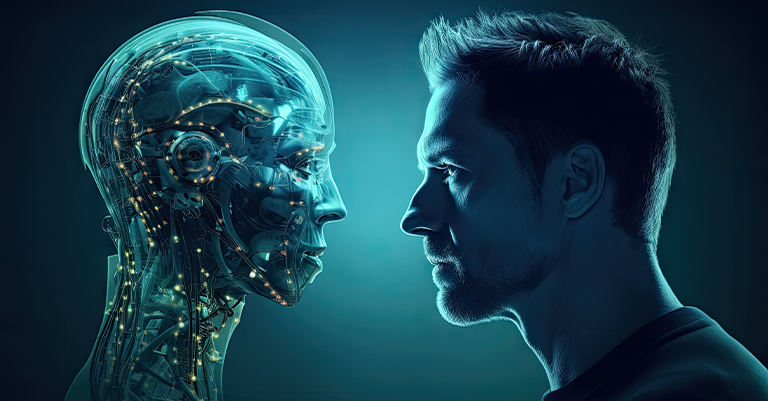
AI image recognition is powerful, but it faces challenges, too:
Data Bias: How Biased Data Affects AI Decision-Making
Data bias is a significant challenge in AI image recognition. AI systems learn by analyzing large sets of images, and the quality of the data they learn from directly affects their accuracy.
If the training data is biased or unbalanced, the AI can learn to make unfair or inaccurate decisions. For example, if a facial recognition system is trained mostly on images of people from a particular demographic, it may have trouble recognizing faces from other groups accurately.
This can lead to unfair outcomes, such as misidentifying individuals or providing lower accuracy in diverse environments.
Addressing data bias requires using diverse and inclusive training data and carefully testing AI systems to ensure they work well for everyone. It’s an important step in making AI image recognition fairer and more reliable.
High Costs: The Expense of Training AI Models
Training AI models for image recognition is a resource-intensive process. It requires powerful computers, large data sets, and a lot of time.
The computational power needed to analyze millions of images and teach the AI to recognize patterns can be expensive. These costs can be a barrier for smaller businesses or researchers who want to develop AI tools.
Additionally, maintaining the systems and keeping them updated with new data adds to the expenses.
Although cloud computing and pre-trained models have made AI more accessible, building a cutting-edge AI system still demands significant investment.
Finding ways to reduce costs through more efficient algorithms and shared resources will be key to making AI image recognition available to a broader range of users.
Privacy Issues: Balancing AI Benefits with Protecting Personal Data
Privacy issues are a major concern when using AI image recognition, especially as the technology becomes more common in everyday life. AI systems often collect data through cameras and sensors. This raises questions about how this data is stored, who can access it, and how it’s used.
For example, facial recognition technology can improve security. However, it also makes people worry about being constantly monitored. Many people are concerned that companies might misuse their images or share data without permission.
To address these concerns, companies must prioritize data security and transparency. They should inform users about what information is being collected and why.
Governments also play a crucial role by creating regulations that protect personal privacy while allowing technological innovation.
Finding the right balance between using AI for convenience and respecting people’s privacy is essential for building trust in this powerful technology.
Closing Thoughts: Embracing the Future of AI Image Recognition

AI image recognition is transforming how we interact with technology, making smartphones smarter, enhancing healthcare, and improving safety. It enables seamless experiences like unlocking phones with a glance, capturing better photos, and finding products online with a simple picture. In healthcare, it assists doctors in diagnosing conditions faster and supports remote consultations, making care more accessible. It also enhances home security with smart cameras and helps self-driving cars navigate roads safely.
As this technology advances, we’ll see even more applications that simplify and enrich our lives, from real-time analysis in devices to immersive augmented reality experiences. These innovations promise a more intuitive and connected digital world.
However, this progress comes with challenges, especially around privacy and ethics. AI image recognition relies on data, raising concerns about how it’s used and secured. Ensuring transparency and establishing strong regulations are essential to build trust and protect user privacy. Striking a balance between innovation and privacy will shape the future of AI in our everyday lives.
Embracing AI image recognition now means preparing for a smarter, more interconnected future. It offers opportunities for new technologies that improve convenience, efficiency, and safety. With responsible use, AI image recognition can enhance daily life, making technology more intuitive and tailored to our needs. As we move forward, this technology has the potential to reshape how we live, work, and connect in meaningful ways.


